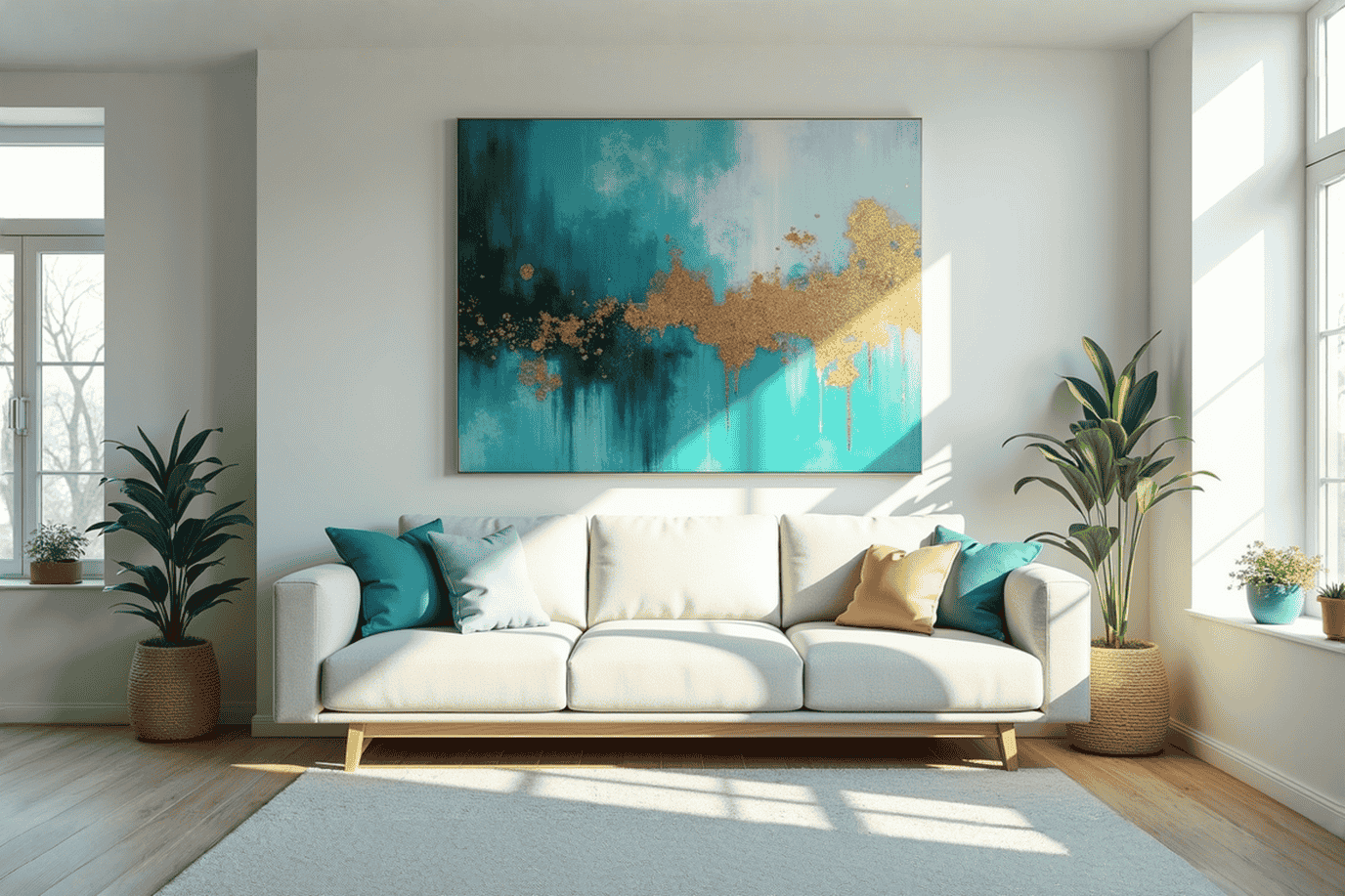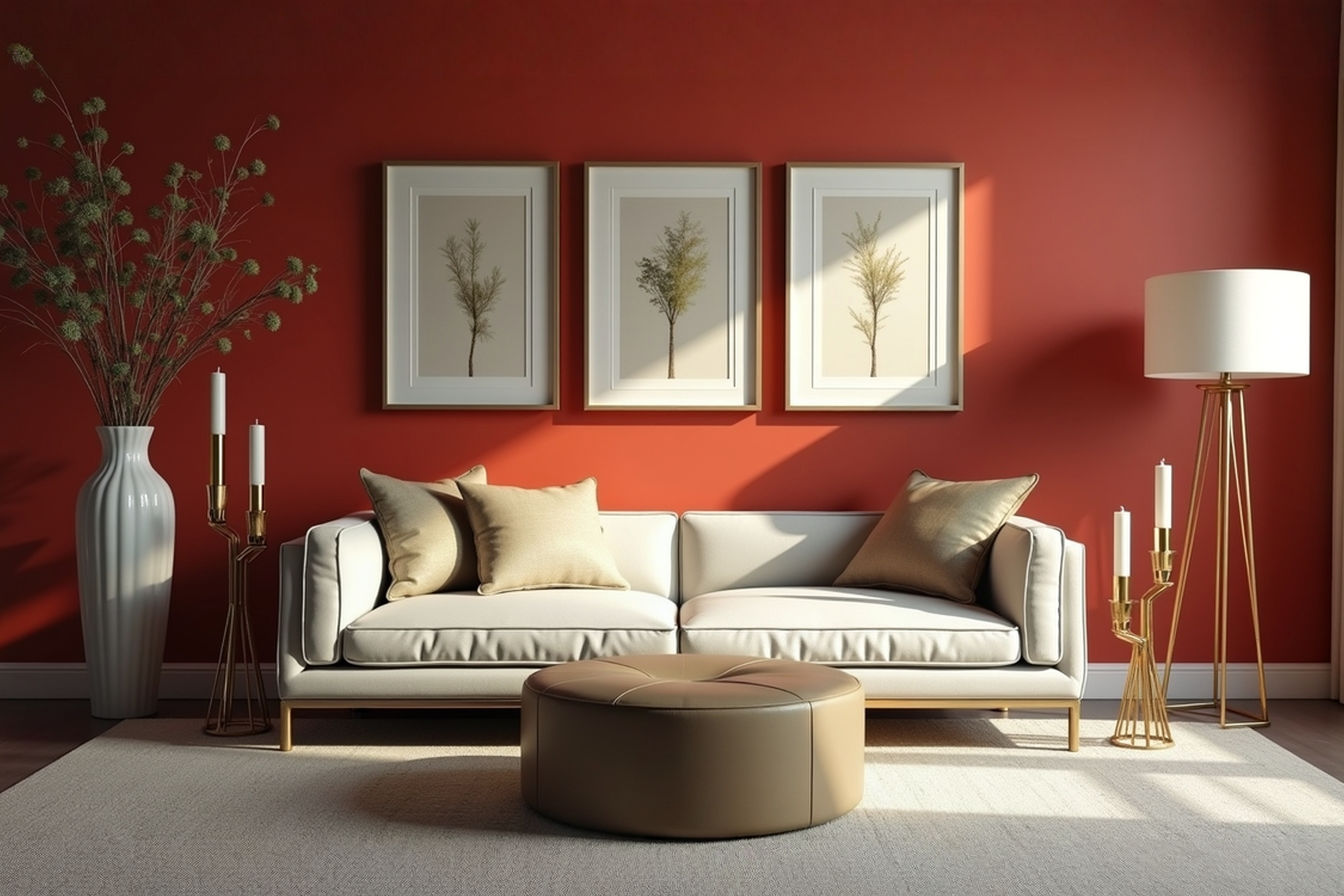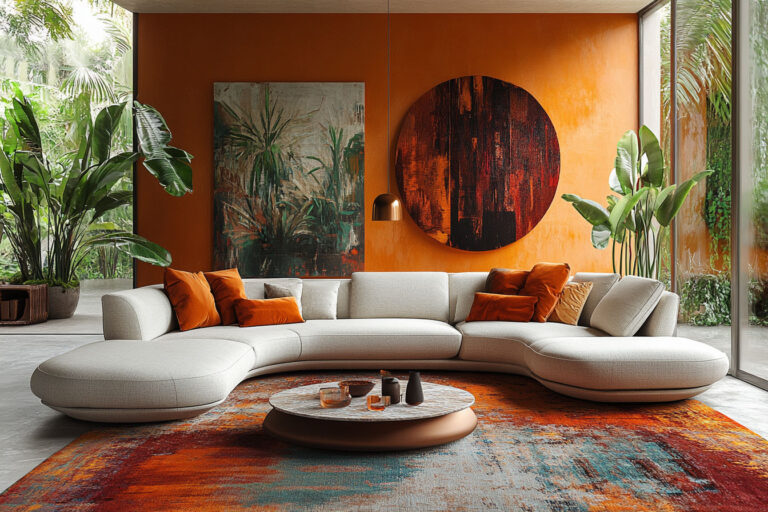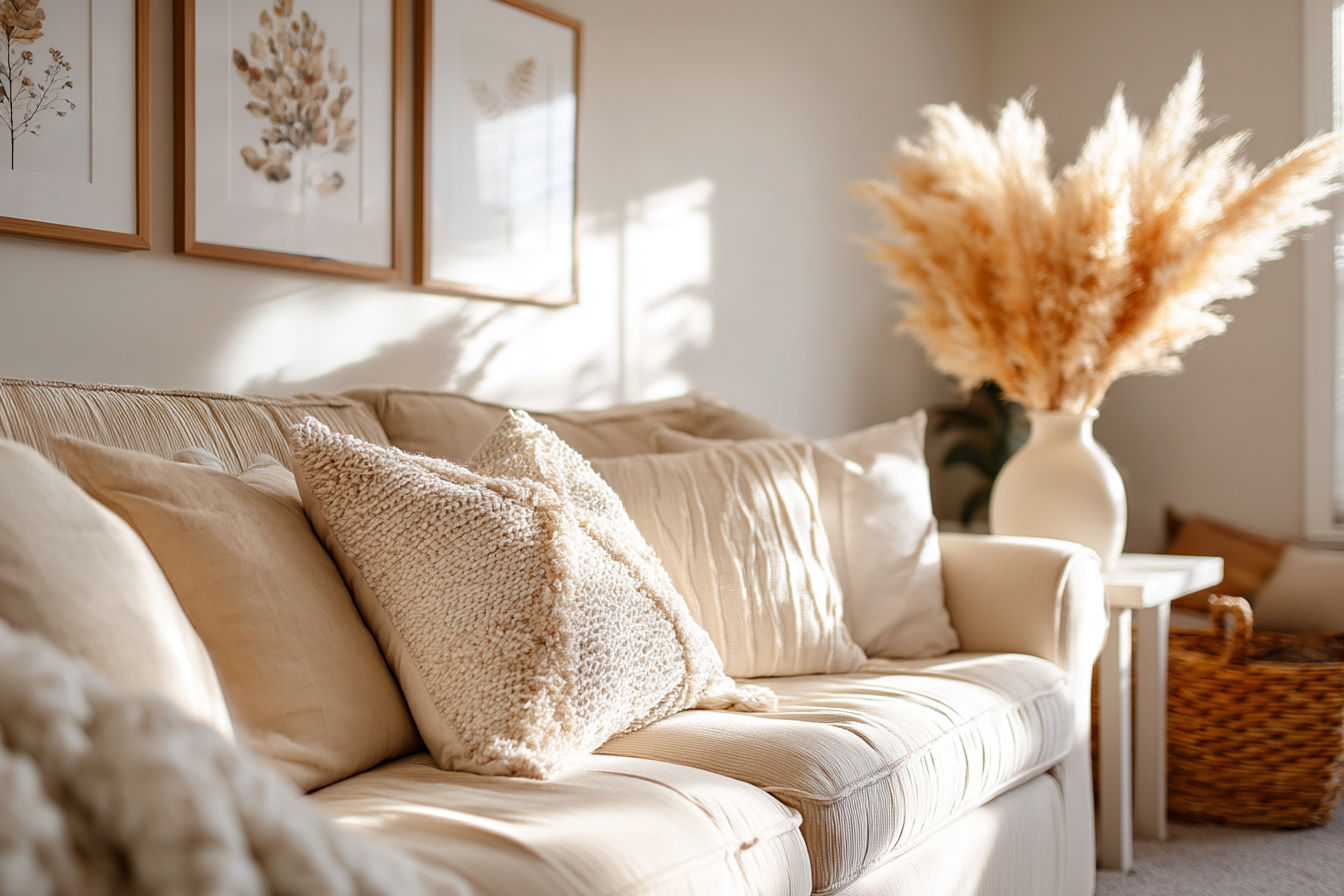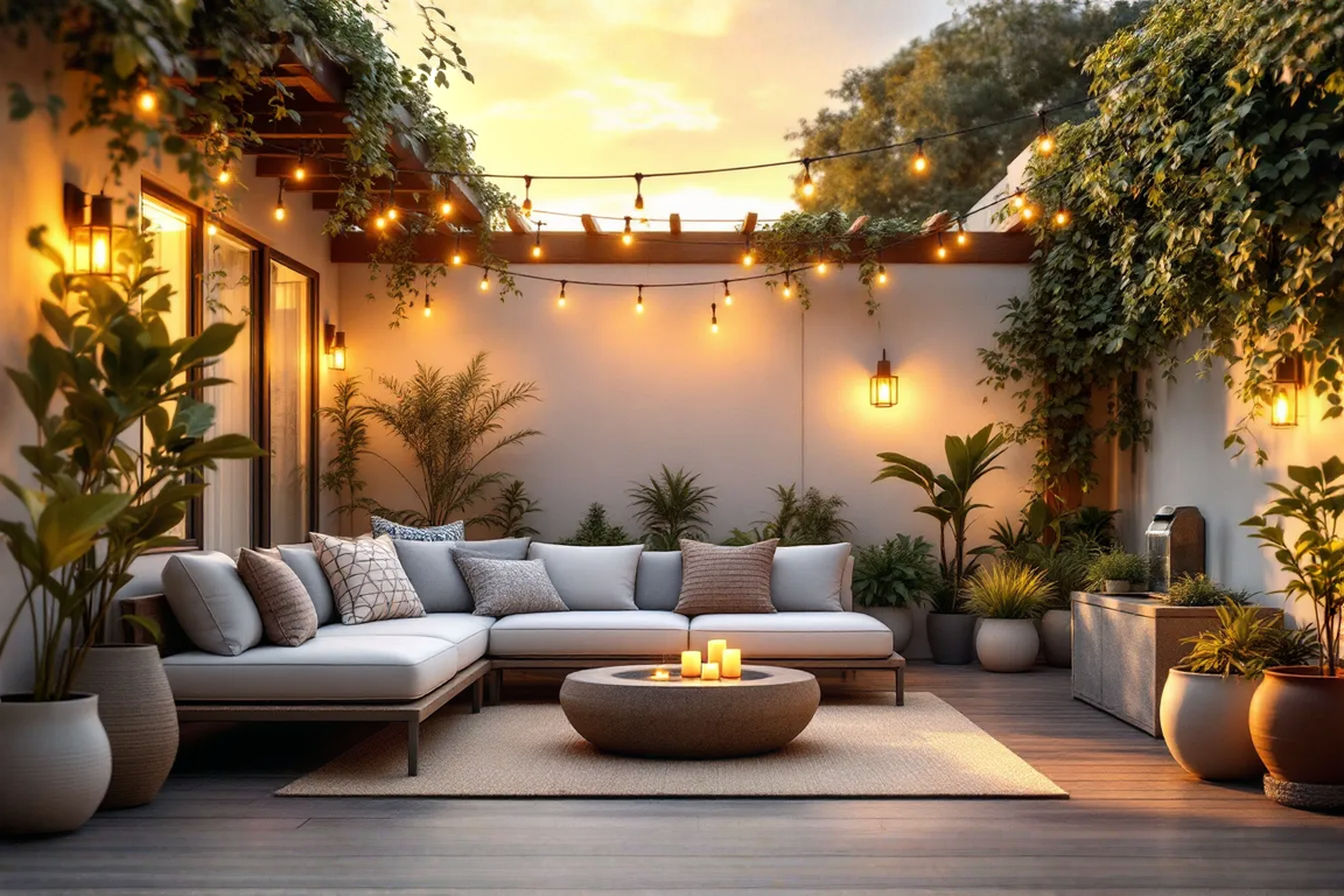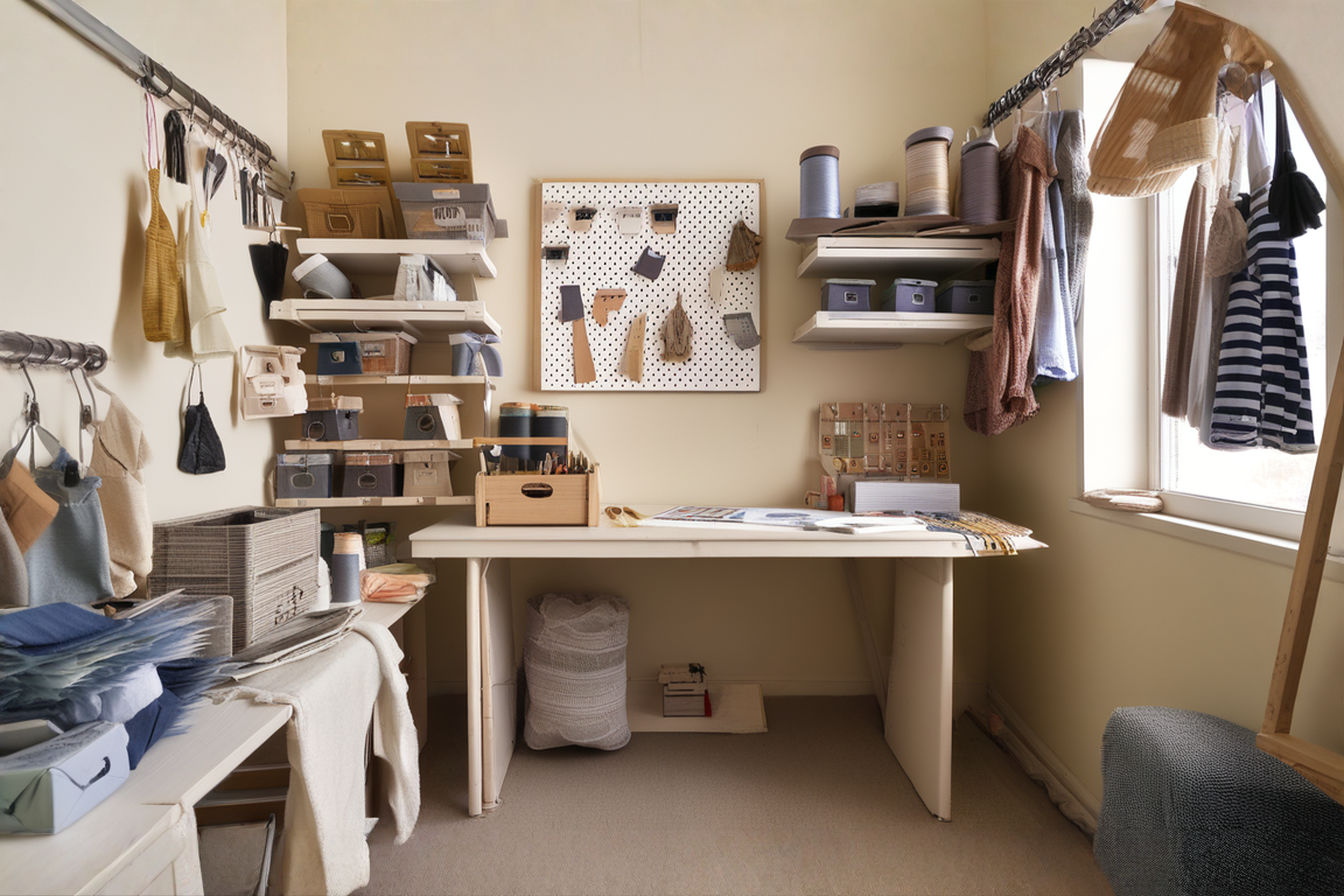This post may contain affiliate links. If you make a purchase through these links, we may earn a commission at no additional cost to you.
Creating a stylish, well-designed home doesn’t require an unlimited budget or access to trade-only resources. Professional interior designers have long kept certain affordable retailers in their back pockets when creating stunning spaces for clients of all budget levels. These industry insiders understand that thoughtful curation, not price tags, ultimately creates an impressive interior. The secret lies in knowing where to look and how to select pieces that appear far more expensive than they actually are.
In this comprehensive guide, we’ll reveal the budget-friendly home decor destinations that professional designers frequent when sourcing affordable yet stylish items for their projects. From versatile furniture finds to unique accessories that add personality to a space, these stores offer exceptional value without compromising on style. Whether you’re furnishing your first apartment or refreshing a long-established home, these designer-approved retailers will help you create a beautiful space that looks anything but cheap.
Why Professional Designers Love Budget-Friendly Stores
Professional interior designers aren’t always working with unlimited budgets. In fact, most designers have become experts at balancing investment pieces with more affordable options. This approach to designing creates not only more accessible spaces but often more interesting ones.
Mixing high and low pieces prevents a room from looking like a showroom and instead creates a collected, personal atmosphere that tells the homeowner’s unique story. Designers appreciate that budget-friendly stores often follow trends quickly, allowing them to incorporate of-the-moment styles without a major investment.
Additionally, many affordable retailers have dramatically improved their quality and design aesthetic in recent years, developing sophisticated collections that rival more expensive brands. Designers recognize that spending less on certain items allows clients to invest more in statement pieces that anchor a space. This strategic approach to designing creates depth and interest while maintaining budget discipline—a skill set that separates good designers from great ones.
Store #1: IKEA – Beyond the Basics
IKEA remains the undisputed champion of affordable home furnishings, but professional designers approach this Swedish retailer with strategies that go far beyond the typical shopping experience. Rather than using IKEA pieces as-is, designers see them as foundations for customization.
The IKEA hack phenomenon has revolutionized how designers utilize these affordable pieces. Simple modifications like replacing standard hardware, adding custom paint finishes, or incorporating unique textiles transform basic IKEA furniture into bespoke-looking items. Designers particularly value IKEA’s kitchen cabinets, which can be paired with higher-end countertops and hardware for a custom look at a fraction of the price.
The store’s lighting section offers particularly good value, with many fixtures featuring clean, modern designs that work in various settings. IKEA’s textile department provides excellent basic curtains, bedding, and pillow covers that serve as perfect canvases for customization. The plant department offers affordable greenery that adds life to any space.
Professional designers recommend focusing on IKEA’s more minimalist pieces rather than highly decorative items, as simplicity tends to look more expensive and timeless. With thoughtful selection and strategic customization, IKEA becomes an invaluable resource for creating designer-worthy spaces without the premium price tag.
Store #2: HomeGoods/TJ Maxx/Marshalls
This trifecta of related stores represents a treasure trove for designers hunting for unique accessories and accent furniture at dramatically reduced prices. These retailers acquire overstock, samples, and previous-season items from higher-end brands, offering them at significant discounts.
The unpredictable inventory creates both challenges and opportunities. Professional designers make regular visits to these stores, knowing that merchandise changes constantly and great finds may disappear quickly. This approach to shopping requires patience and a trained eye, but the rewards can be substantial.
Designers particularly value these stores for accessories like decorative objects, throw pillows, art, mirrors, and table lamps—items that add personality and finishing touches to a space. The bedding and bath sections offer luxury brands at steep discounts, allowing for high-quality linens without the luxury price tag.
The furniture selections vary widely in quality, so designers recommend examining pieces carefully for solid construction and good materials. Occasional chairs, side tables, and ottomans often represent the best furniture values. For maximum impact, designers suggest focusing on items with simple designs in natural materials like wood, glass, ceramic, and natural fibers, which tend to look more expensive than their synthetic counterparts.
Store #3: Target’s Home Collections
Target has revolutionized the affordable home decor landscape through strategic designer collaborations and well-curated in-house brands. Professional designers regularly browse Target’s home department for stylish basics and on-trend accessories that offer remarkable value.
The retailer’s designer collaborations with names like Studio McGee, Joanna Gaines (Hearth & Hand with Magnolia), and Justina Blakeney (Jungalow) bring designer aesthetics to mass-market prices. These limited-edition collections feature cohesive styles that allow consumers to create a pulled-together look without hiring a professional.
Target’s lighting department has particularly impressed designers in recent years, offering fixtures that closely resemble much more expensive options. The Threshold and Project 62 lines provide modern basics with clean lines and quality materials that integrate seamlessly into designer spaces.
Seasonal decor items represent another area where Target excels, allowing for affordable seasonal refreshes that keep interiors current. Designers recommend watching for Target’s frequent home decor sales, which provide even deeper discounts on already affordable pieces. For the most designer-worthy selections, focus on items featuring natural materials, interesting textures, and neutral color palettes, which tend to look more expensive than their price tags suggest.
Store #4: At Home
With massive stores containing over 50,000 items, At Home has become a designer secret weapon for affordable decor in virtually every style imaginable. This retailer specializes in home accessories, offering one of the largest selections of decorative items at budget-friendly prices.
The sheer volume and variety of merchandise sets At Home apart from competitors. Designers appreciate the store’s organization by color and style, making it easier to find pieces that coordinate with existing design schemes. The seasonal selections are particularly strong, offering trendy holiday decor at prices that allow for annual updates.
At Home excels in categories like decorative storage, wall art, mirrors, artificial plants, and decorative objects. The retailer’s large-scale items—oversized art, substantial vases, and statement mirrors—offer especially good value, as these pieces typically command premium prices elsewhere.
Professional designers recommend focusing on At Home’s more restrained pieces rather than heavily themed or ornate items, which can sometimes look inexpensive. Simple ceramic vases, textured baskets, and architectural objects in neutral tones represent the best finds for a sophisticated look. The store’s frequent sales and clearance sections provide additional opportunities for significant savings on already affordable merchandise.
Store #5: Tuesday Morning
This off-price retailer has earned a devoted following among professional designers for its eclectic, ever-changing inventory of home goods sourced from around the world. Tuesday Morning specializes in closeouts and overstock from recognizable brands, offering discounts of 50-80% off department store prices.
The global sourcing approach results in a unique selection of items with distinctive character—exactly what designers seek when trying to create spaces that don’t look mass-produced. The inventory includes a surprising number of items from high-end brands that would normally be found only in luxury home stores.
Designers particularly value Tuesday Morning for table linens, decorative pillows, and bedding, often finding European imports at a fraction of their original prices. The store’s selection of serving pieces, barware, and kitchen accessories offers excellent quality at dramatically reduced prices.
The furniture selection tends to be limited and inconsistent, but occasional gems appear, particularly in accent furniture categories. For maximum design impact, professionals recommend focusing on items with classic styling rather than trendy pieces, as Tuesday Morning’s procurement process sometimes means items are from previous seasons. Patience and regular visits yield the best results, as inventory changes frequently and varies significantly between locations.
Store #6: World Market
With its globally inspired merchandise and accessible price points, World Market occupies a unique position in the affordable home decor landscape. Professional designers value this retailer for its distinctive aesthetic that incorporates influences from around the world.
The global design perspective provides access to looks and styles that might otherwise require shopping at specialty importers or during international travel. Designers appreciate World Market’s ability to make exotic looks accessible to average consumers through affordable interpretations of global design trends.
The furniture selection represents particularly good value, offering solid wood construction and interesting silhouettes at prices that compare favorably to particle board options from other retailers. World Market’s accent furniture—side tables, benches, and occasional chairs—provides opportunities to add character pieces with architectural interest.
Beyond furniture, the retailer excels in decorative accessories, particularly those made from natural materials like seagrass, rattan, ceramic, and mouth-blown glass. The textile department offers globally inspired patterns in pillows, throws, and curtains that add visual interest to neutral spaces.
Professional designers recommend taking advantage of World Market’s frequent sales and rewards program, which can reduce prices by 30% or more. For maximum design impact, focus on items that showcase interesting textures and handcrafted qualities, which add depth and character to contemporary interiors.
Store #7: Wayfair & Overstock
These online marketplaces have transformed how designers source affordable furnishings, offering vast selections that would be impossible in traditional retail settings. Professional designers have developed strategies for navigating these massive sites to find hidden gems among millions of products.
The advanced filtering capabilities allow designers to narrow searches by specific criteria like materials, dimensions, and features, making it possible to find exactly what a project requires. Both retailers offer items across the price spectrum, but savvy designers know how to identify the best values.
Designers particularly appreciate these sites for furniture categories that traditionally command high markups in brick-and-mortar stores, such as upholstered seating, beds, and dining tables. The direct-from-manufacturer model eliminates middleman costs, resulting in significant savings on larger pieces.
Area rugs represent another category where these online retailers excel, offering designs ranging from traditional to contemporary at prices far below specialty rug dealers. Lighting fixtures, particularly more contemporary styles, can be found at substantial discounts compared to design centers and lighting showrooms.
Professional designers recommend reading reviews carefully, focusing on comments about construction quality and materials rather than subjective style opinions. For maximum design impact, filter searches by natural materials and higher-end features like down cushions or kiln-dried hardwood frames, which often indicate better quality regardless of price point.
Store #8: H&M Home
While primarily known for fashion, H&M’s home division has earned respect among professional designers for its sophisticated aesthetic and remarkably low prices. The retailer brings its fast-fashion approach to home goods, offering trend-forward designs that allow for seasonal updates without major investment.
The European design influence sets H&M Home apart from many American budget retailers, with a more restrained, contemporary aesthetic that resembles higher-end Scandinavian design. Designers appreciate the retailer’s muted color palette and emphasis on natural materials, which create a more expensive look than the price tags suggest.
H&M Home particularly excels in textiles, offering linen and cotton bedding, tablecloths, and curtains with the relaxed, rumpled aesthetic currently favored in high-end design. The retailer’s decorative pillows feature sophisticated patterns and textures that would be at home in luxury showrooms.
Small decorative items like ceramic vases, brass objects, and wooden accessories offer exceptional value, mimicking the minimalist aesthetic found in much more expensive retailers. Designers recommend focusing on H&M Home’s most restrained pieces in natural materials and neutral colors for the most sophisticated look.
While H&M Home has limited brick-and-mortar presence in the US, its online store offers the full range, with frequent sales and promotions that further reduce the already accessible prices. For maximum design impact, designers suggest shopping H&M Home’s limited-edition designer collaborations, which offer distinctive pieces with high design credentials.
Store #9: Big Lots
Once dismissed as purely a discount outlet, Big Lots has undergone a significant transformation that has caught the attention of budget-conscious designers. The retailer now offers surprisingly stylish furniture and home decor at prices that allow for guilt-free updates and experimentation.
The furniture department has experienced the most dramatic upgrade, now featuring on-trend silhouettes and performance fabrics that rival the aesthetics of much more expensive retailers. Designers particularly value Big Lots for outdoor furniture, accent seating, and occasional tables, which offer good quality at prices substantially below comparable pieces elsewhere.
The retailer’s lighting section provides remarkably good value, with table and floor lamps that closely resemble designer styles at a fraction of the price. Decorative pillows, throws, and small accessories allow for seasonal color updates without significant investment.
Big Lots excels in seasonal and holiday decor, offering trendy items that can be replaced annually without guilt. The retailer’s frequent furniture sales and discount programs provide additional savings opportunities on already affordable merchandise.
Professional designers recommend focusing on Big Lots’ more contemporary pieces rather than traditional styles, as the modern options generally look more expensive than their traditional counterparts. For maximum design impact, look for items with clean lines and minimal ornamentation, which tend to present as more high-end regardless of their actual price.
Store #10: Thrift Stores & Estate Sales
Perhaps the ultimate source for unique, affordable home decor, thrift stores and estate sales have long been secret weapons in professional designers’ arsenals. These venues offer one-of-a-kind items with history and character that can’t be replicated through mass-market retail.
The thrill of the hunt makes these shopping venues both challenging and rewarding. Professional designers regularly visit local thrift shops, knowing that inventory changes constantly and extraordinary finds appear without warning. Estate sales offer more curated collections, often representing an entire lifetime of collecting.
Designers particularly value these sources for art, books, and decorative objects that add personality and lived-in character to spaces. Vintage frames, mirrors, and lighting fixtures often feature craftsmanship and materials that would be prohibitively expensive in new items. Furniture with good bones can be transformed through reupholstering or refinishing.
For maximum design impact, professionals recommend focusing on items made from natural materials like wood, brass, glass, and ceramic, which tend to age well and look more expensive than synthetic alternatives. Vintage textiles, especially hand-embroidered linens and wool throws, add texture and history to contemporary spaces.
While shopping secondhand requires patience and vision, the payoff includes truly unique items at pennies on the dollar compared to retail prices. More importantly, these found objects add authenticity and personal narrative to spaces in ways that newly manufactured items cannot, regardless of price point.
Store #11: Facebook Marketplace & Local Online Marketplaces
The digital evolution of classified ads has created a powerful resource for designers seeking affordable furnishings with character and quality. Facebook Marketplace and similar local selling platforms connect buyers directly with sellers, eliminating retail markups and offering extraordinary bargains on pre-owned items.
The hyperlocal nature of these platforms provides access to furnishings that reflect regional tastes and influences, offering alternatives to homogenized national retail chains. Designers regularly monitor these marketplaces for specific items needed in current projects, setting up alerts for particular keywords.
These platforms offer exceptional value in larger furniture pieces that would command high prices when new, particularly solid wood dining tables, dressers, and seating. Quality vintage pieces from recognizable brands often appear at fractions of their original prices as homeowners upgrade or downsize.
For maximum design impact, designers recommend focusing searches on quality materials rather than specific styles, using search terms like “solid wood,” “marble top,” or “brass” rather than “dresser” or “coffee table.” This approach filters for better-quality items regardless of current style designation.
Professional designers view these marketplaces as a form of sustainable shopping, giving well-made pieces second lives while reducing landfill waste. Beyond the environmental benefits, these pre-owned items often feature better construction than similarly priced new alternatives, with solid wood replacing particleboard and quality craftsmanship replacing fast-furniture construction techniques.
How to Shop Like a Designer on a Budget
Professional designers approach budget-friendly retailers with strategies that transform ordinary shopping trips into opportunities for extraordinary finds. Adopting these approaches can help anyone shop more effectively, regardless of budget constraints.
Developing a trained eye represents the most important skill in budget shopping. Professional designers recommend studying high-end design magazines and websites to understand proportions, materials, and combinations that characterize sophisticated spaces. This visual education helps shoppers identify items that mimic expensive aesthetics at lower price points.
Shopping with a plan rather than impulsively prevents accumulating clutter that ultimately appears cheap. Designers create detailed lists of needed items with specific dimensions and functions before entering budget retailers, preventing distracting “bargains” from derailing the overall design vision.
Patience proves essential in finding exceptional affordable pieces. Professional designers visit budget retailers regularly rather than expecting to find everything in a single trip. This approach allows for curating over time rather than settling for whatever happens to be available during a one-time shopping expedition.
Focusing on materials rather than trends helps identify items that will look expensive regardless of their actual cost. Natural materials like wood, stone, ceramic, glass, linen, and cotton generally present as more high-end than their synthetic counterparts, regardless of price point.
Tips for Mixing High & Low Pieces
Creating a designer-worthy interior on a budget typically involves strategically combining investment pieces with more affordable finds. Professional designers have developed principles for this high-low approach that prevent spaces from looking either too precious or too cheap.
Investing strategically in items that receive the most wear or visual attention maximizes impact while controlling overall costs. Designers typically recommend allocating more budget to seating (particularly sofas and primary bedroom mattresses), which directly affect comfort, and to larger case goods that anchor spaces visually.
Balancing these investment pieces with budget-friendly accessories, accent furniture, and decorative elements creates interiors that appear thoughtfully curated rather than either extravagantly expensive or cheaply furnished. This balanced approach creates depth and interest that purely high-end or purely budget interiors often lack.
Professional designers recommend applying the 80/20 rule to budget allocation: spending approximately 80% of the furniture budget on 20% of the items (the largest, most-used pieces) while economizing on the remaining 80% of items with budget-friendly alternatives. This approach ensures that the most impactful elements have the quality to anchor the space.
Avoiding matched sets prevents the mass-produced look that can make even expensive furnishings appear cheap. Designers recommend selecting pieces that coordinate rather than match exactly, creating the impression of a space that evolved over time rather than being purchased all at once from a single source.
Conclusion
Creating a beautifully designed home doesn’t require unlimited resources or exclusive access to trade-only showrooms. Professional designers have long recognized that thoughtfully selected affordable pieces can create sophisticated, personalized spaces that rival much more expensive interiors. The key lies not in how much you spend but in how thoughtfully you select and combine items from various sources.
By incorporating these budget-friendly retailers into your decorating strategy and adopting professional designers’ approaches to shopping and styling, you can create a home that reflects your personal aesthetic without emptying your bank account. Remember that truly great design has never been about price tags but about thoughtful curation, proportion, and the creation of spaces that support and enhance daily life.
The most beautiful homes tell personal stories through thoughtfully selected items that mean something to their owners. By combining carefully chosen investment pieces with creative, budget-friendly finds from these designer-approved sources, you can create a space that looks expensive, feels personal, and leaves room in your budget for the experiences that ultimately matter more than possessions.

